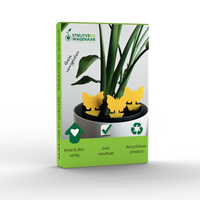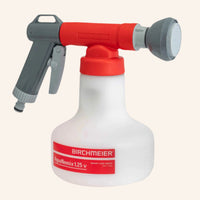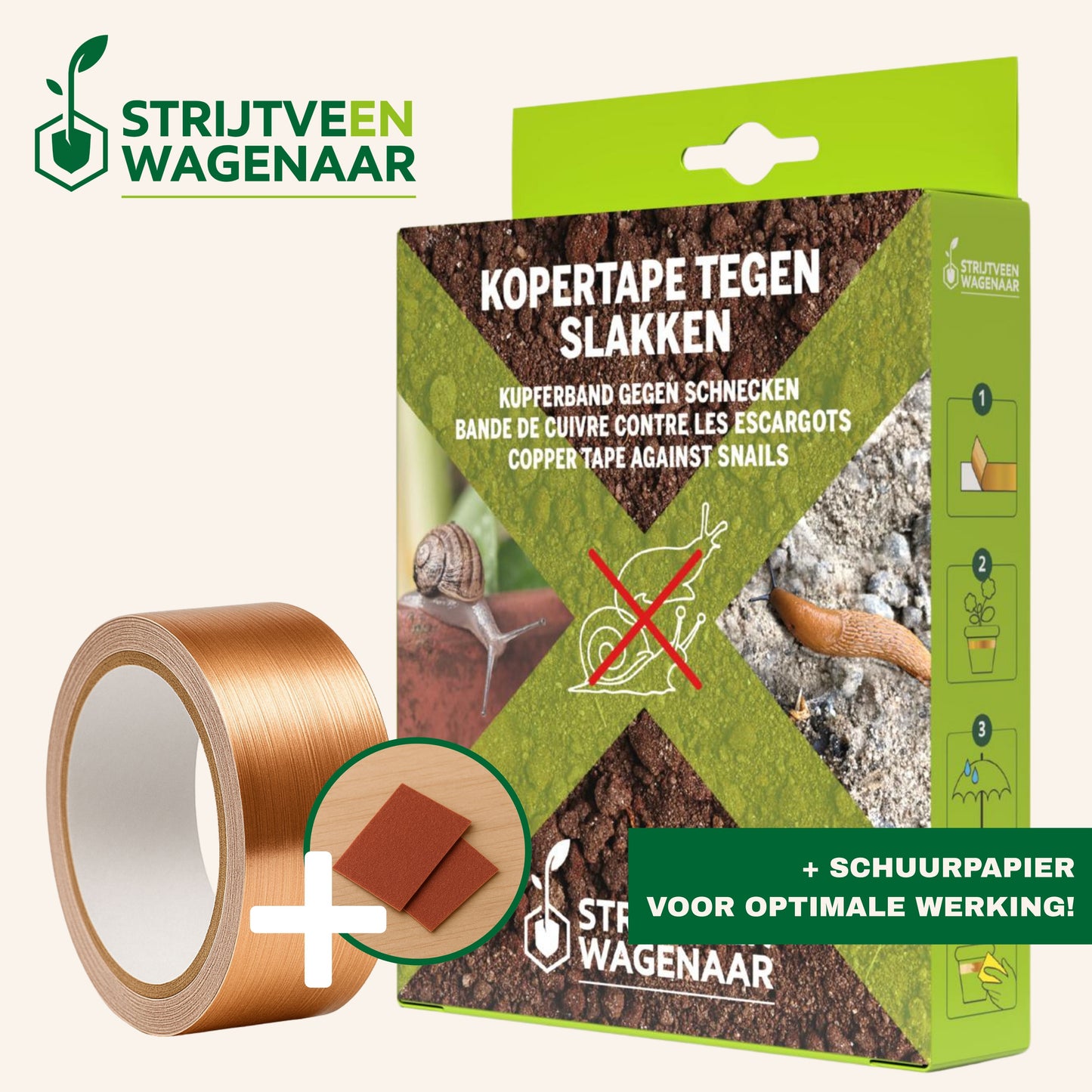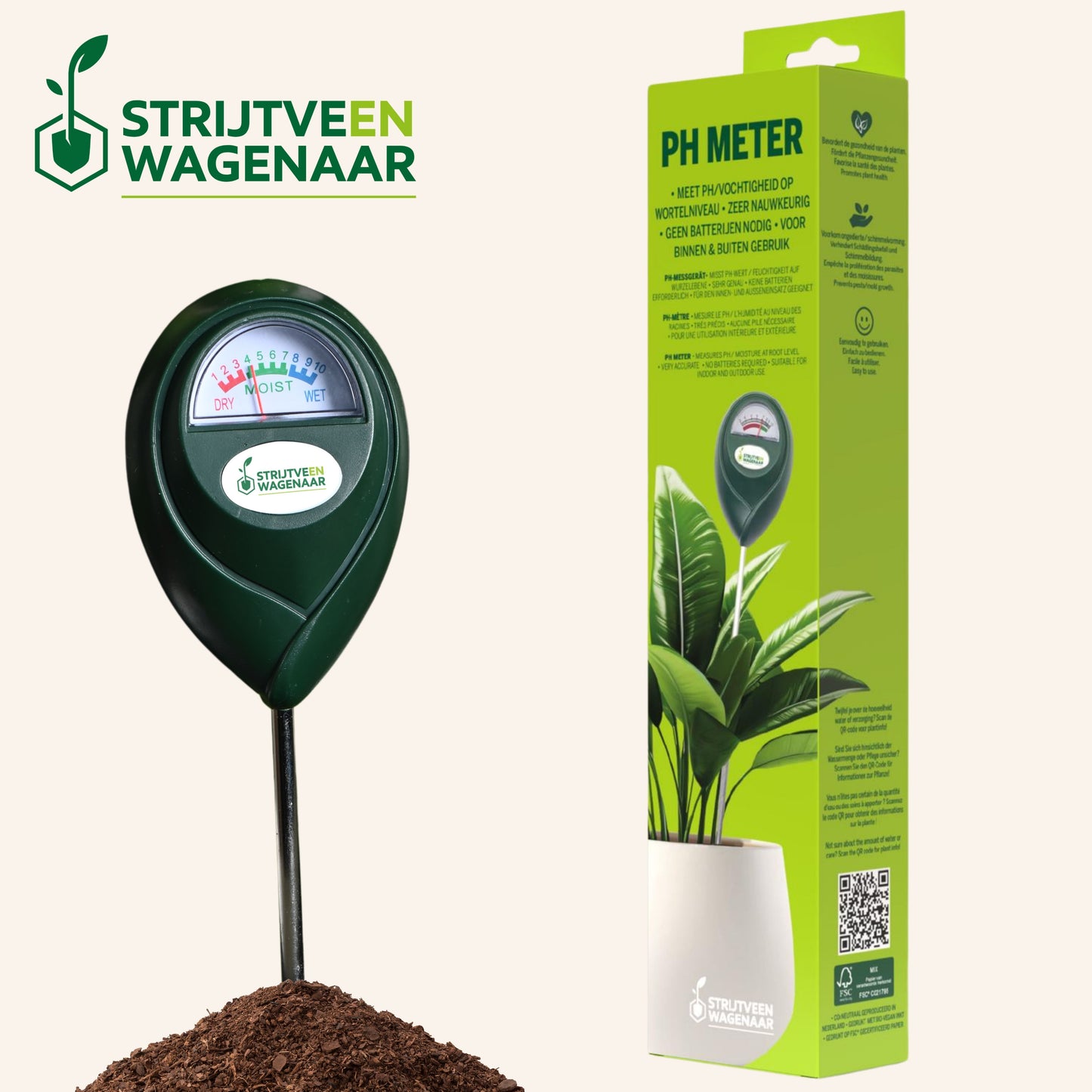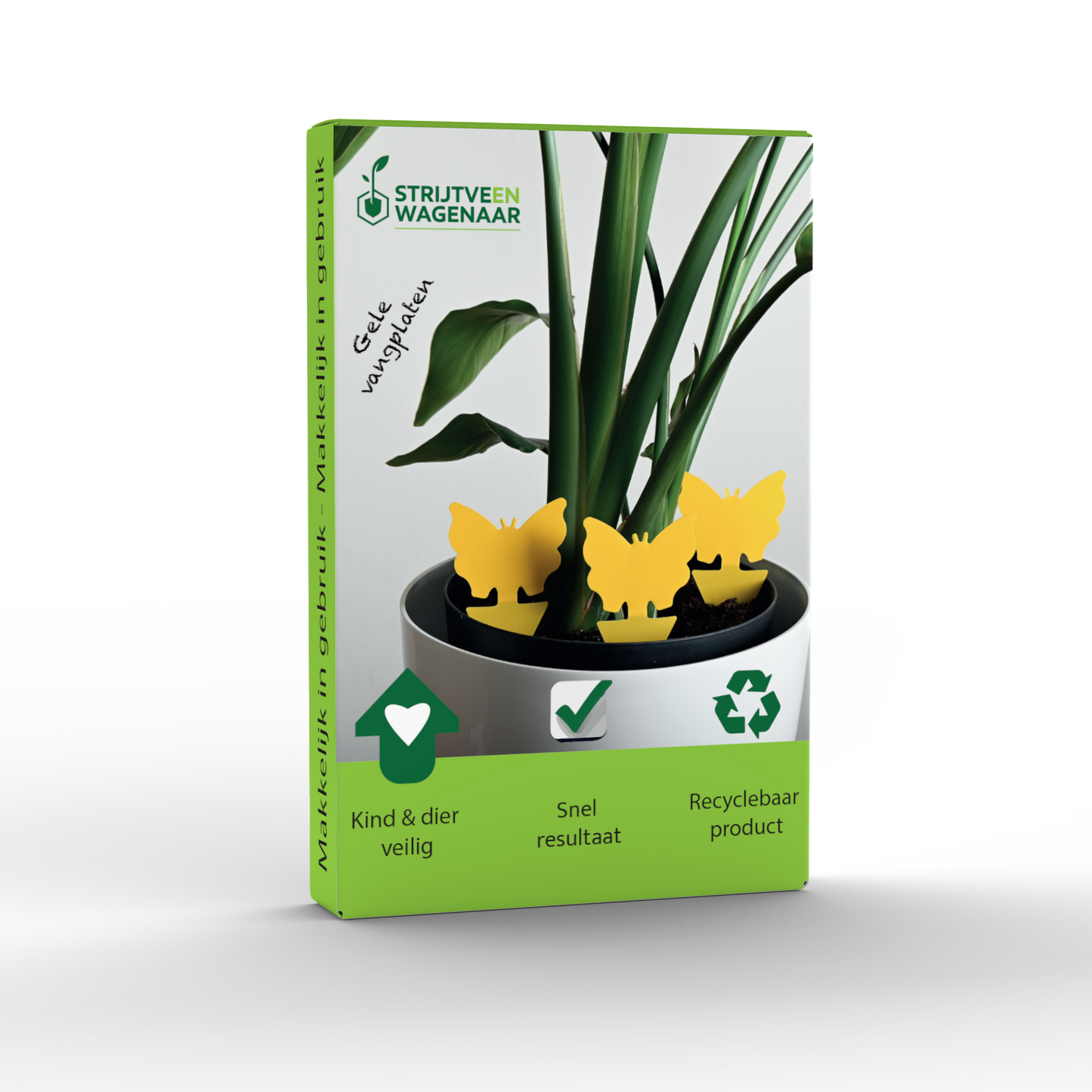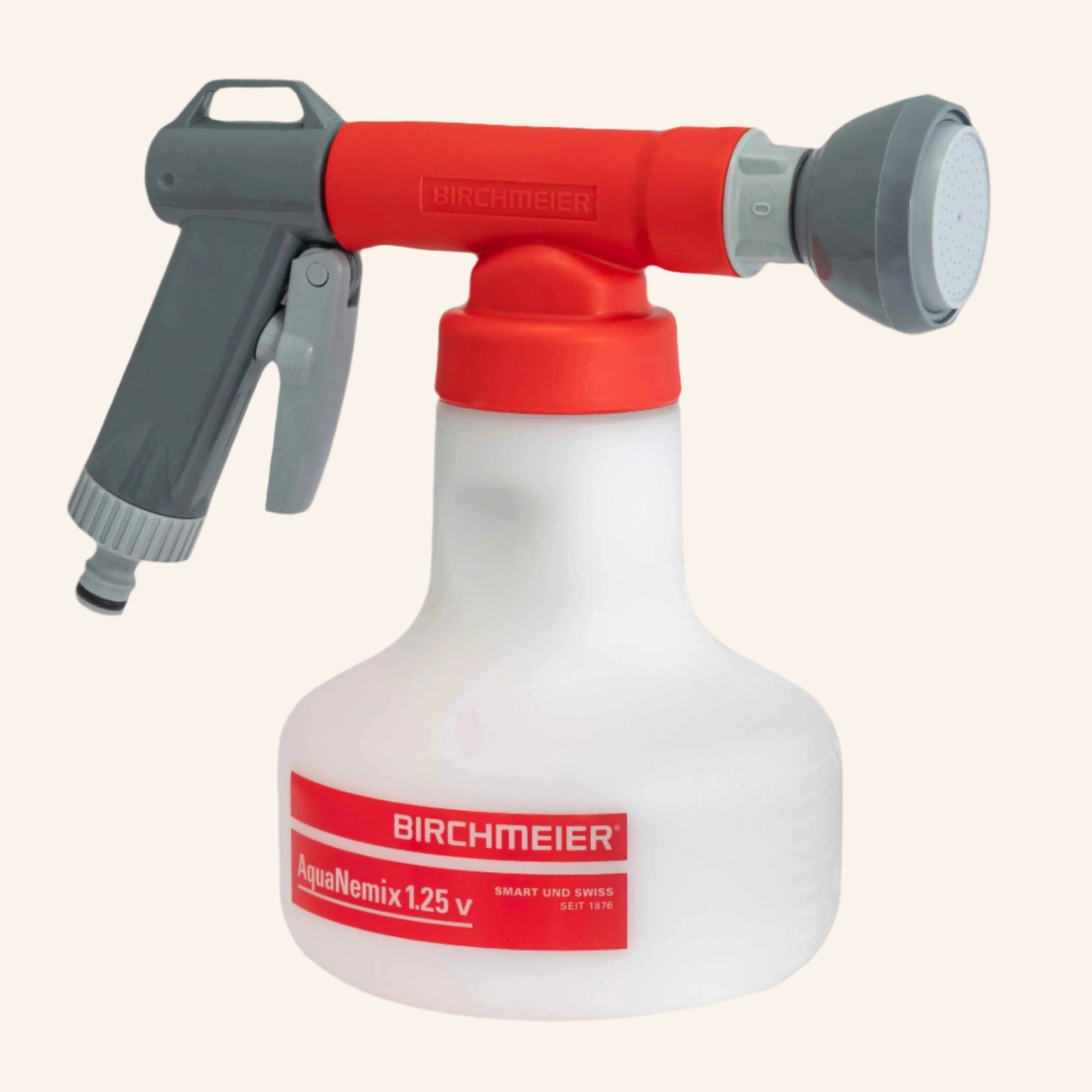
A beautiful, green lawn is every gardener's dream. But nothing is more frustrating than bare, yellow, or brown patches that spoil the perfect lawn. This can have various causes, from soil problems to excessive use. Fortunately, there are solutions for every cause. In this blog post, you'll learn in detail why bare patches occur and what you can do about them, so your lawn looks neat and healthy again.
Causes of bald, yellow or brown spots in the lawn
Bare, yellow, or brown patches in your lawn can have several causes. Sometimes it's due to the soil, sometimes maintenance, and sometimes external factors, such as pests or weather conditions, play a role. It's important to properly determine the cause so you can choose a suitable solution. Below, we discuss the most common reasons why bare patches appear.
1. Moss and weeds
Moss and weeds can crowd out grass and leave bare patches. This is especially common in damp, shady areas where grass grows less well. Soil acidity also plays a significant role: soil that is too acidic gives moss and weeds a better chance to survive, while grass becomes less vigorous. Insufficient fertilization and poor drainage can further promote moss and weed growth. This results in an uneven lawn with bare, yellow, or brown patches that gradually expand.
2. Soil problems
Healthy soil is the foundation of a strong lawn. When the soil is too acidic or too compact, grass roots struggle to develop. An incorrect pH level or a deficiency of essential nutrients like nitrogen, phosphorus, and potassium weakens the grass and makes it more susceptible to diseases and pests. This ultimately leads to bare, yellow, or brown patches, where grass seed struggles to germinate and grow.
3. Overuse
A lawn that receives intensive use, for example, from children playing, pets, or a trampoline, takes a beating. The grass wears down faster than it can recover, creating bare patches. Frequently used paths can also flatten and damage the grass. This creates compacted areas where water and nutrients are less able to penetrate the soil, hindering grass growth.
4. Animals in the garden
Dogs and cats can cause burns in the grass with their urine. This is because urine contains a high concentration of nitrogen, which can have a burning effect on the grass. Moles, grubs, and other soil insects can also cause damage by damaging roots and attacking the grass from below. This causes the grass to die, leaving bare, yellow, or brown patches.
5. Mowing too short
Many people mow their lawns too short, which can seriously weaken the grass. When the grass is cut too low, it photosynthesizes less effectively, resulting in slower growth. This makes the lawn more vulnerable to dehydration, weeds, and moss growth. Furthermore, mowing too short can lead to a stressed lawn, making it more susceptible to diseases and pests.
6. Diseases and pests
Various grass diseases, such as snow mold or red thread, can cause bare patches in your lawn. Pests like grubs and leatherjackets eat the grass roots, causing it to die. If you notice the grass is easily shed or birds are pecking at your lawn, this could be a sign of soil-borne insects causing damage.

Example of a grub
Solutions: How to restore a lawn with bare patches?
Fortunately, a lawn with bare patches can often be repaired easily, provided you choose the right approach. Whether it's overseeding, fertilizing, or improving the soil structure, there are several ways to make your lawn healthy and full again. We'll explain which methods work best and how to prevent bare patches from returning.
1. Overseeding and fertilizing
To repair bare patches, overseeding is an effective solution. Use grass seed that's suitable for your lawn and spread it evenly over the bare patches. Lightly press the seeds in and ensure the soil remains moist. Combine this with a good fertilizer to stimulate growth. Choose a fertilizer rich in nitrogen in the spring and potassium in the fall to ensure optimal grass development.
2. Soil improvement
Healthy soil makes for a strong lawn. Test the soil pH and adjust it with lime if it's too acidic, or with compost if it's too alkaline. Aerating with a spiked roller or a scarifying rake helps compacted soil and allows oxygen, water, and nutrients to penetrate more effectively. This gives the grass more growth and reduces the risk of bare, yellow, or brown patches.
3. Protection against pests
Are you having problems with grubs or leatherjackets ? Then you can use biological pest control with nematodes. These microscopic worms penetrate the larvae and kill them, allowing your lawn to recover. Regular scarifying and aerating also helps reduce soil-borne insects.
Want to learn more about grubs? Read our blog !
4. Mow at the correct height
Keep the mowing height at least 4 cm to keep the grass healthy. A lawn mowed too short is more vulnerable to dehydration, weeds, and moss. Also, don't mow more than a third of the grass blade at a time to prevent the grass from experiencing too much stress and to help it recover more quickly.
5. Water properly
A well-watered lawn is more resistant to bare, yellow, or brown patches. Water less frequently, but deeply, to encourage deeper root growth. This makes the grass stronger and more drought-resistant. Avoid watering during the hottest part of the day, as water evaporates more quickly and can burn the grass.
6. Tackling shady areas
Shady areas pose a challenge for grass growth. Prune trees and shrubs to allow more light to reach the lawn. Use grass seed specifically formulated for shady areas. In extremely shady areas, consider an alternative, such as ground cover or wood chips.
Prevention is better than cure
By properly maintaining your lawn, you can largely prevent bare patches. Regular mowing, fertilizing, and aerating help the grass stay strong and healthy. Pay attention to the soil conditions and protect your lawn from pests and diseases. Do you still experience bare, yellow, or brown patches? Address them immediately with the tips above and enjoy a full, green lawn again!
Looking for organic solutions to lawn problems? Browse our range and discover the best products for a healthy lawn!


